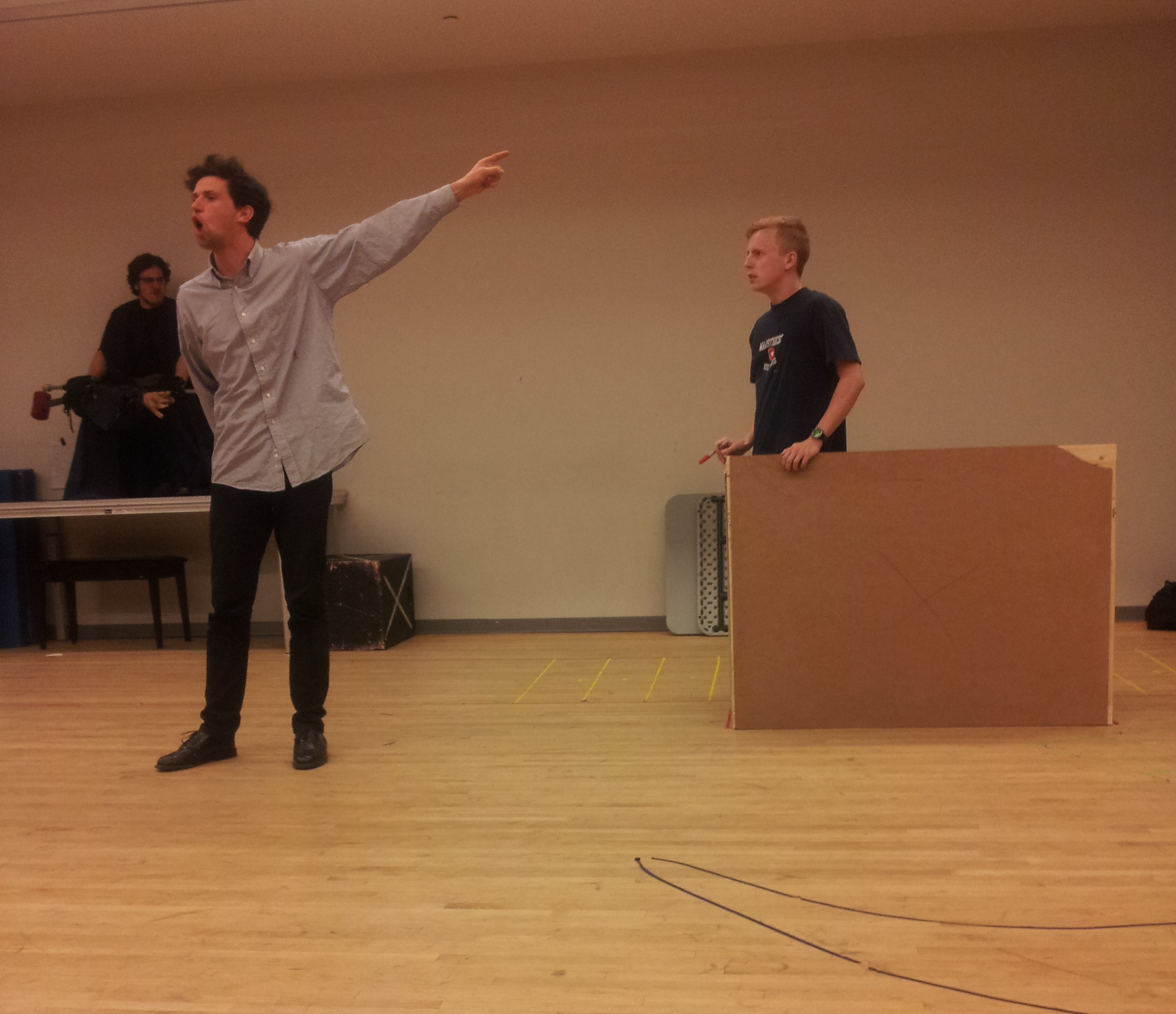You would never guess that the same people running cheerfully after a Dora the Explorer ball in the rehearsal studio on the 7th floor of the MB building were the same people skillfully putting on such a meditative yet comical play as The Last Days of Judas Iscariot.
Originally penned in 2005 by American playwright Stephen Adly Guirgis, the show takes place in a courtroom in purgatory where Judas stands trial against “God and the Kingdom of Heaven.” A number of witnesses are called to the stand including Sigmund Freud, Satan, Mother Teresa, and even Jesus himself.
Director Sarah Garton Stanley and two assistant directors, Cameron Sedgwick and Courtney Larkin, oversee a large cast and crew of Concordia theatre students.
“It’s one of the plays that I could have read as a book, and while reading it, just be laughing out loud to myself, it’s hilarious,” says Sedgwick. “Once you find yourself emotionally opened by the humour, you’re hit with these questions about the soul and the afterlife.”
The show dives deep into the conflict between divine forgiveness and a human’s free will by putting the very concept of personal responsibility on trial. Judas himself is in a near catatonic state after being numbed for so many years by the guilt for betraying Jesus.
“The language itself is really impressive,” explains Sedgwick. “It takes a very experienced playwright to make characters sound as different as these characters do. They’re so drastically different.”
“It speaks really strongly to the fact that [Adly Guirgis] wrote it for a specific [theatre] company,” continues Lucia Corak, the stage manager. “He knew he could see each actor as a character.”
There are different dialects and historical implications that have to be taken into consideration when portraying such famous characters, and it is evident the actors have done so.
The directors continuously ask the actors questions that help them to make small choices about their characters and better define who they are. With each run, the pacing becomes quicker, and the relationships become better defined, as small things such as eye contact or reaction time start to fit together, allowing the show to come together like a puzzle.
“The show is really a wonderful coming together of a strong directorial team, fun actors who really push themselves and take creative risks, and a wonderful script,” says Lindsey Huebner, who plays Judas’ defence lawyer Fabiana Aziza Cunningham.
Coloured markers on the floor of the rehearsal studio outline where the set pieces of grungy junk piles will go. They are meant to bring out the feeling of purgatory.
The actors playing members of the jury make use of puppets, which are comprised of old inanimate objects. The idea is that these objects were once people who have been there so long that they have become part of the trash.
“There already existed this idea of there being a junk heap, kind of a junk heap for souls and a junk heap for refuse from earth, so why not make the puppets out of those things?” explains Sedgwick.
The actors faced the difficult task of breathing life into these objects. The question is: How do you give a rusty old teapot a personality?
Ensemble breathing exercises and emotions such as “surprised” or “terrified” were given to the cast by the directors. Within a few days, the actors had the puppets breathing, “swaggering” and reacting in unison, creating the uncanny feeling that these outwardly random objects could see and hear everything that was going on.
The number of different characters in the show means organizing a fairly large cast.
“There’s a lot of doubling of actors playing multiple characters, so from my point there’s a lot of props and lots of set pieces that get reused and get shuffled around,” says Corak. “It’s logistically keeping track of where everybody has to be at which point. They all play jury members so I have to know who is in which part of the stage when, what do they have, and keep track of what physically is happening and where the physical actors and furniture pieces are.”
The show will be performed in the Loyola Chapel in keeping with the religious connotations the play presents. However, the space does present some challenges.
“It’s acoustically different than a theatre. You have the echo, so clarity of text is really essential,” explains Huebner. “The back of the chapel is the front of our stage, so we have a lot of different levels to be working with, things that we can’t really mimic in the rehearsal hall.”
Sedgwick also explains that the lack of a lighting grid in the chapel poses a problem. Instead of having the lighting set up, as a normal theatre would, lights have to be hung.
“It’s been a wonderful process so far and I’m really excited to see it come to fruition,” says Huebner. “I’m really proud of the work that my peers have done. I’ve seen people do things that I didn’t even know they were capable of.”
With the pressure of exams upon most students, this exceptional display of theatre may relieve the stress for a couple hours. It might even make you realize exams really are not that bad compared to sitting in purgatory for 50 years.
The Last Days of Judas Iscariot runs April 11 and 13 at 8 p.m., April 14 at 2 p.m. and 8 p.m. and April 15 at 1 p.m. at the Loyola Chapel. Admission is $5 for students.
